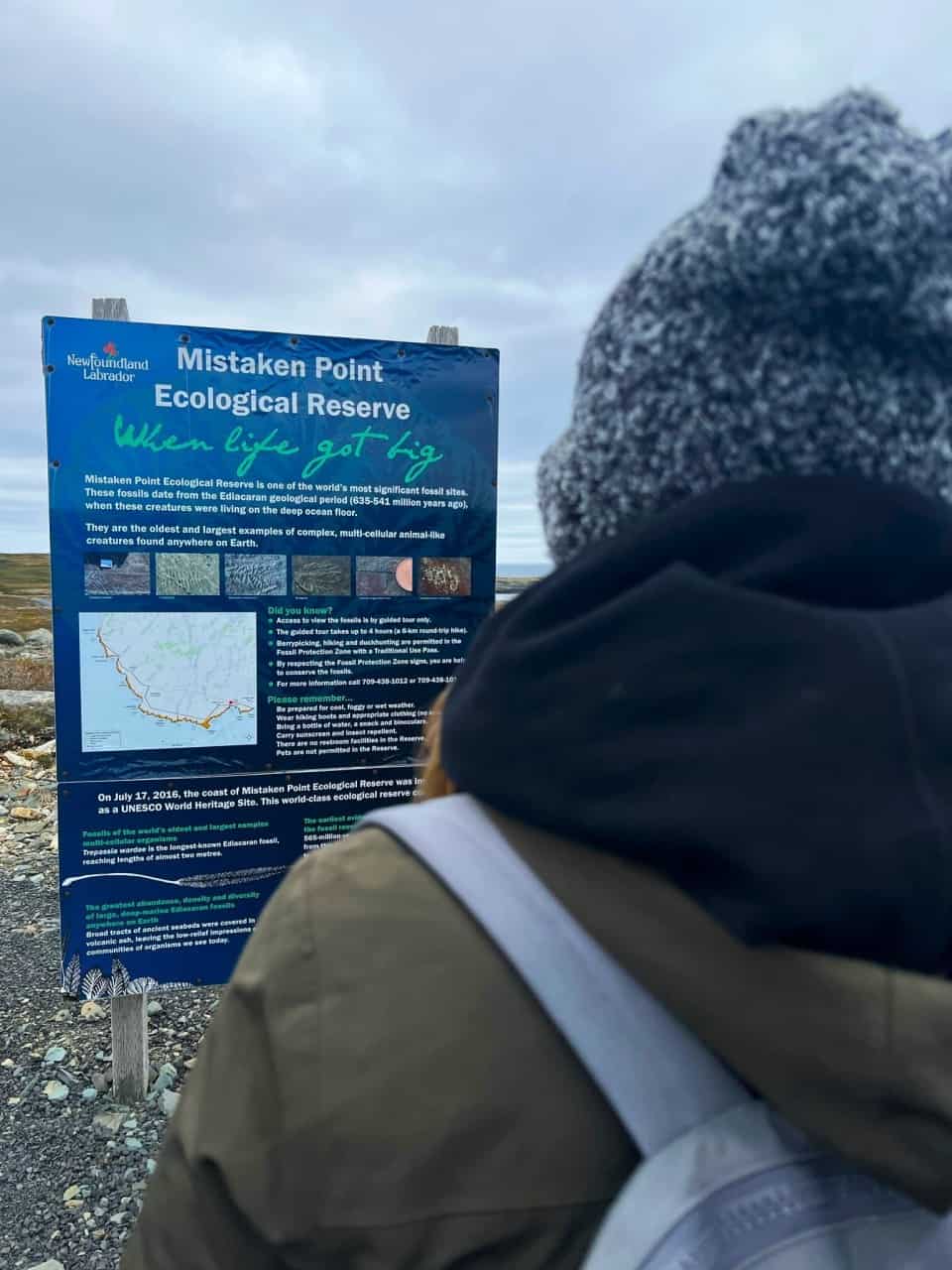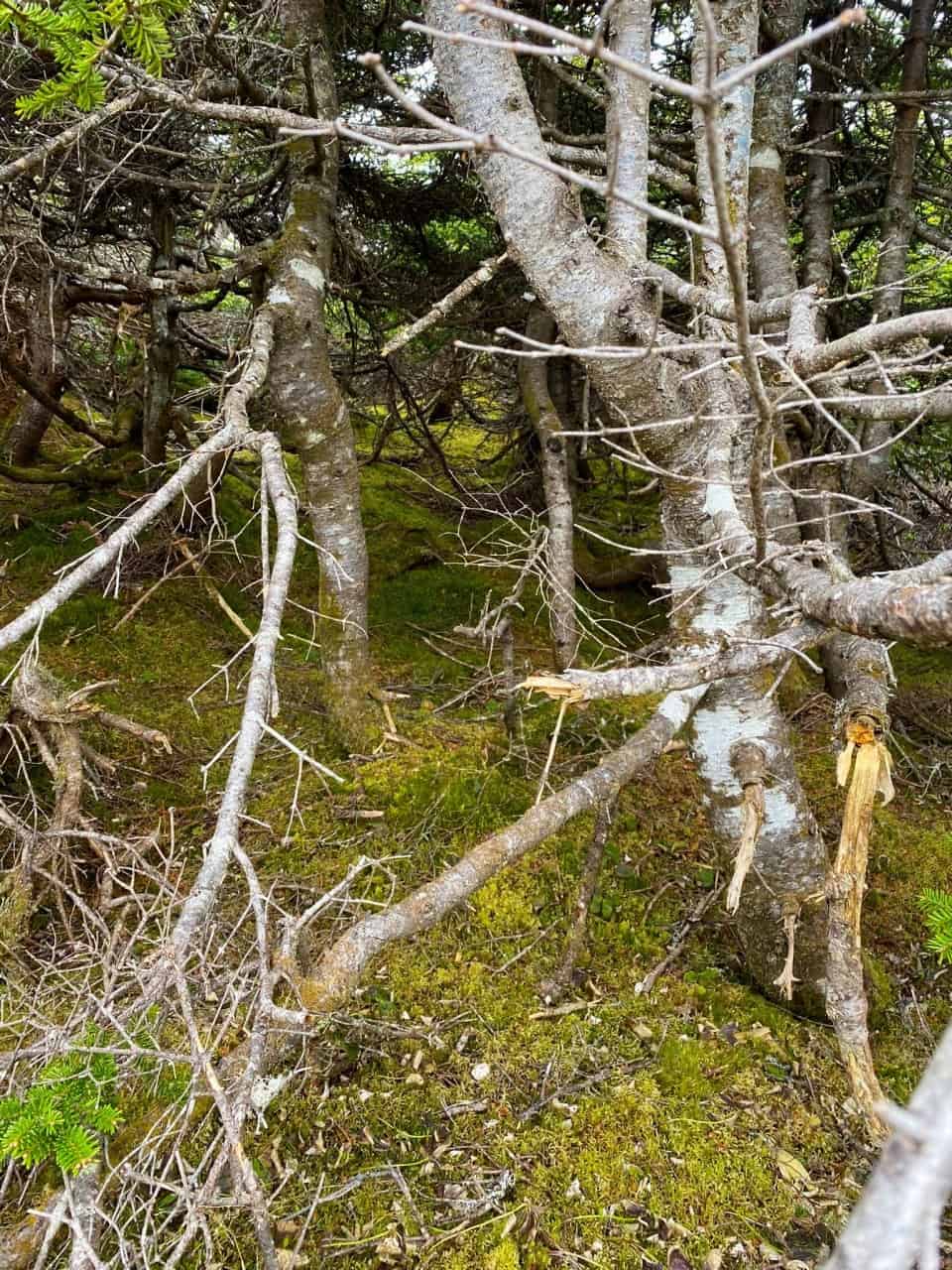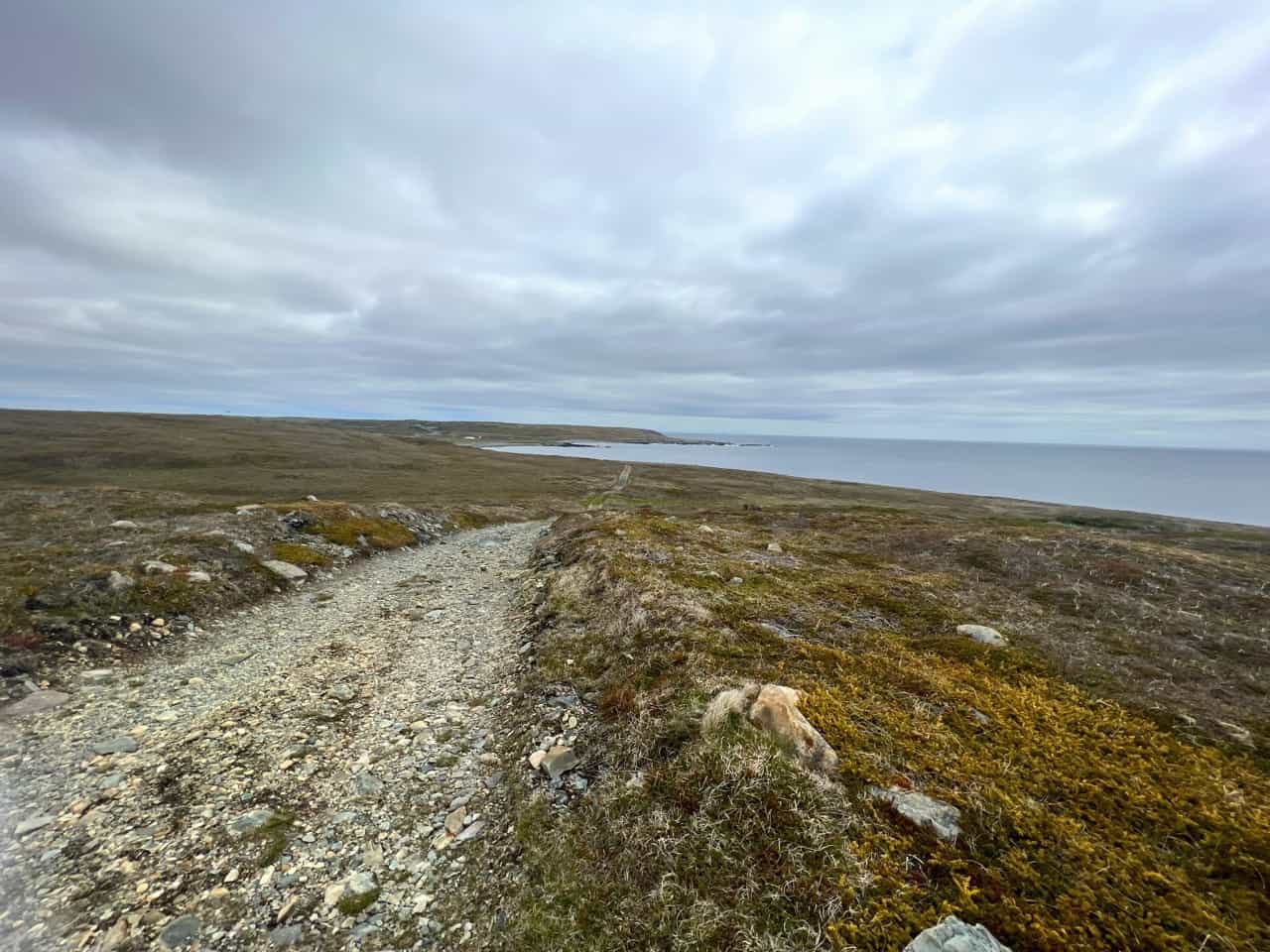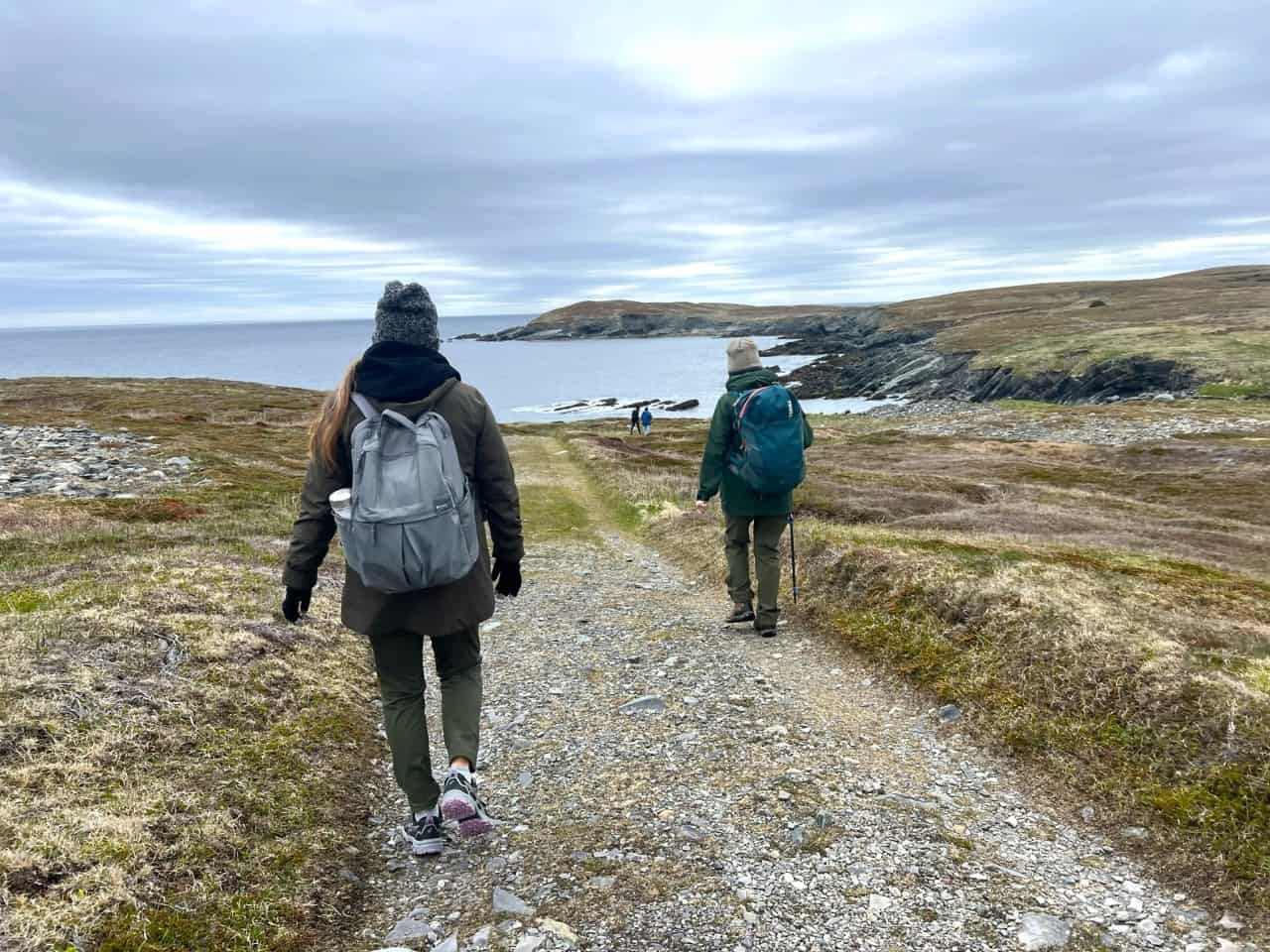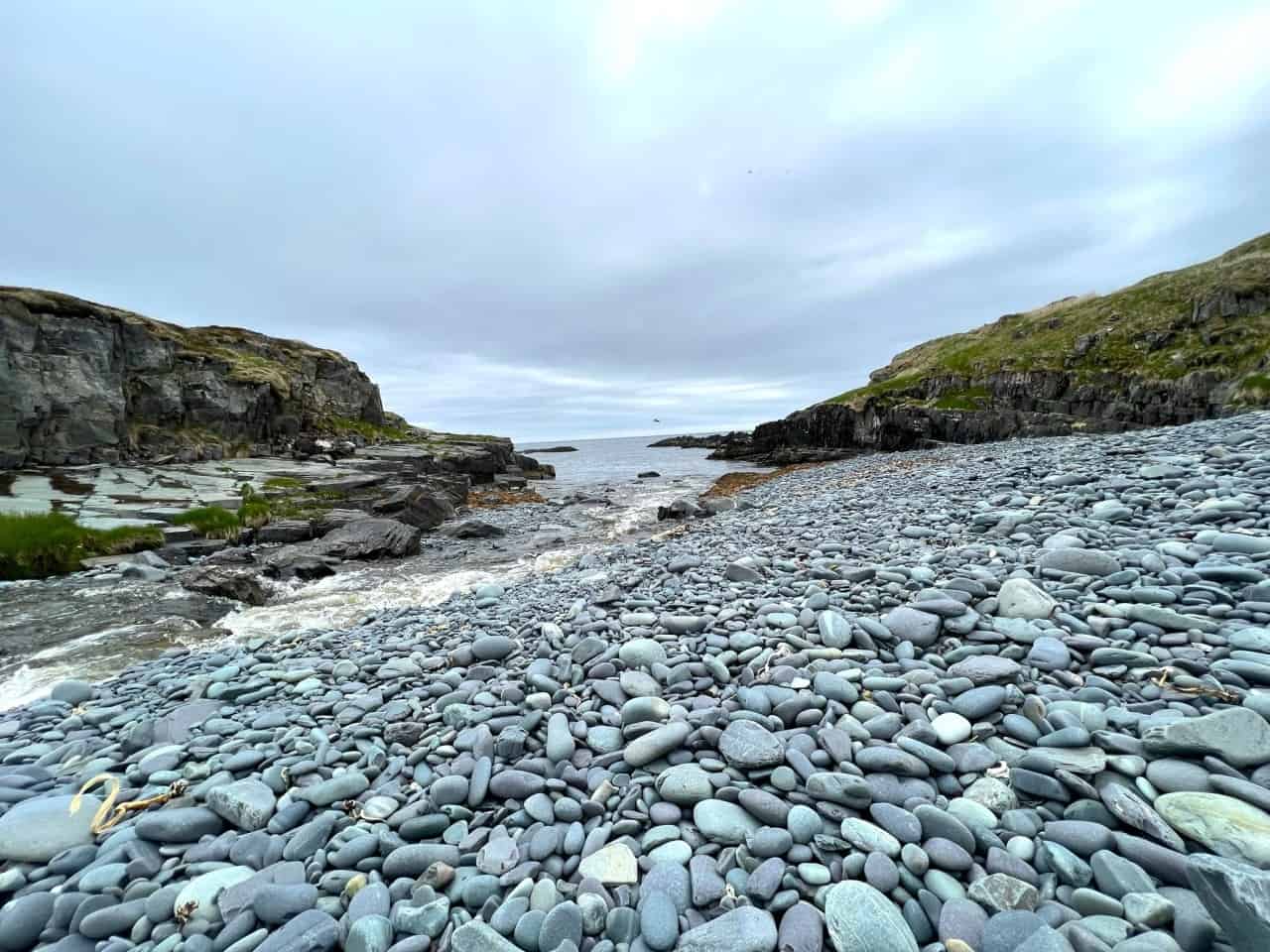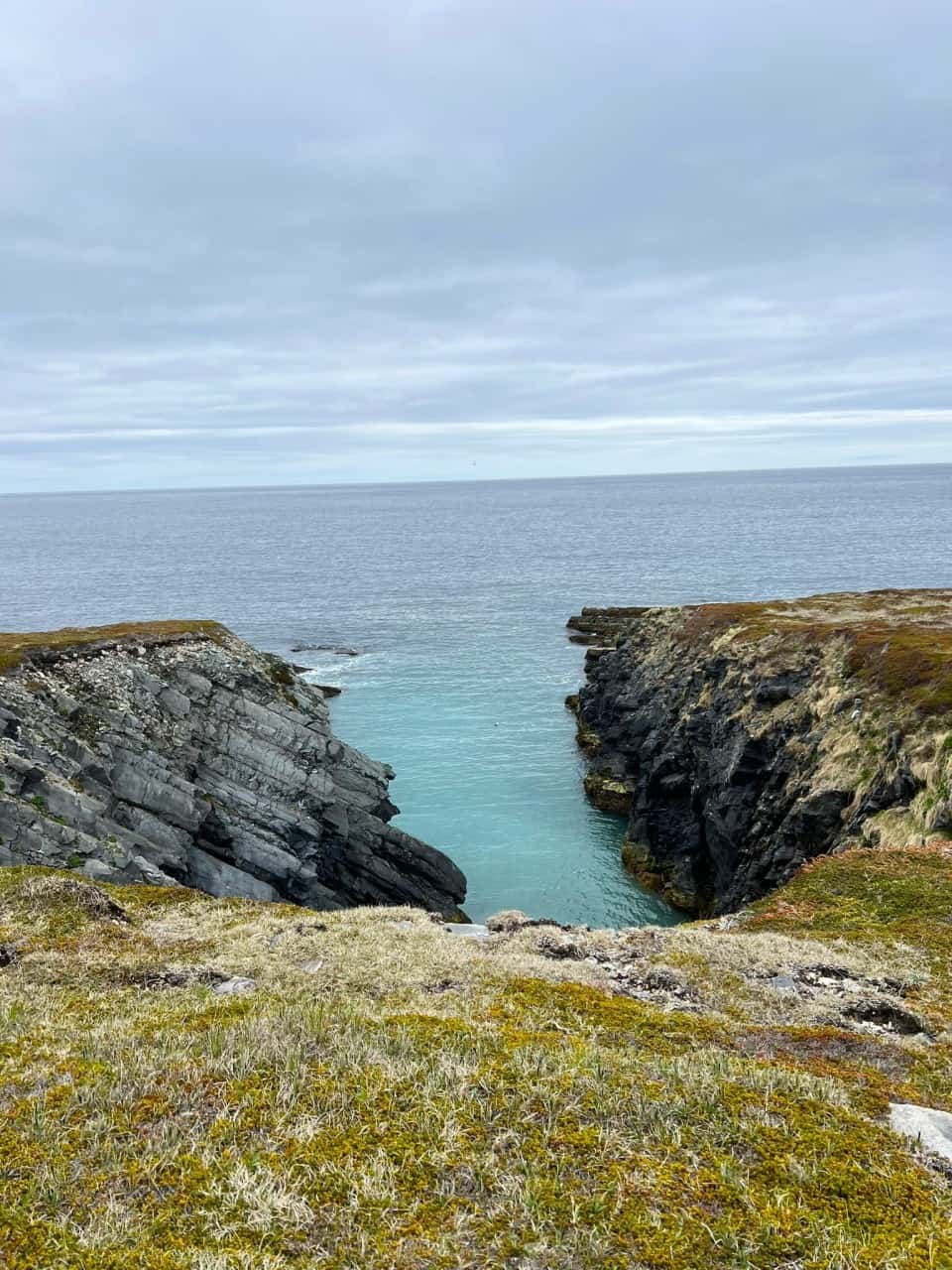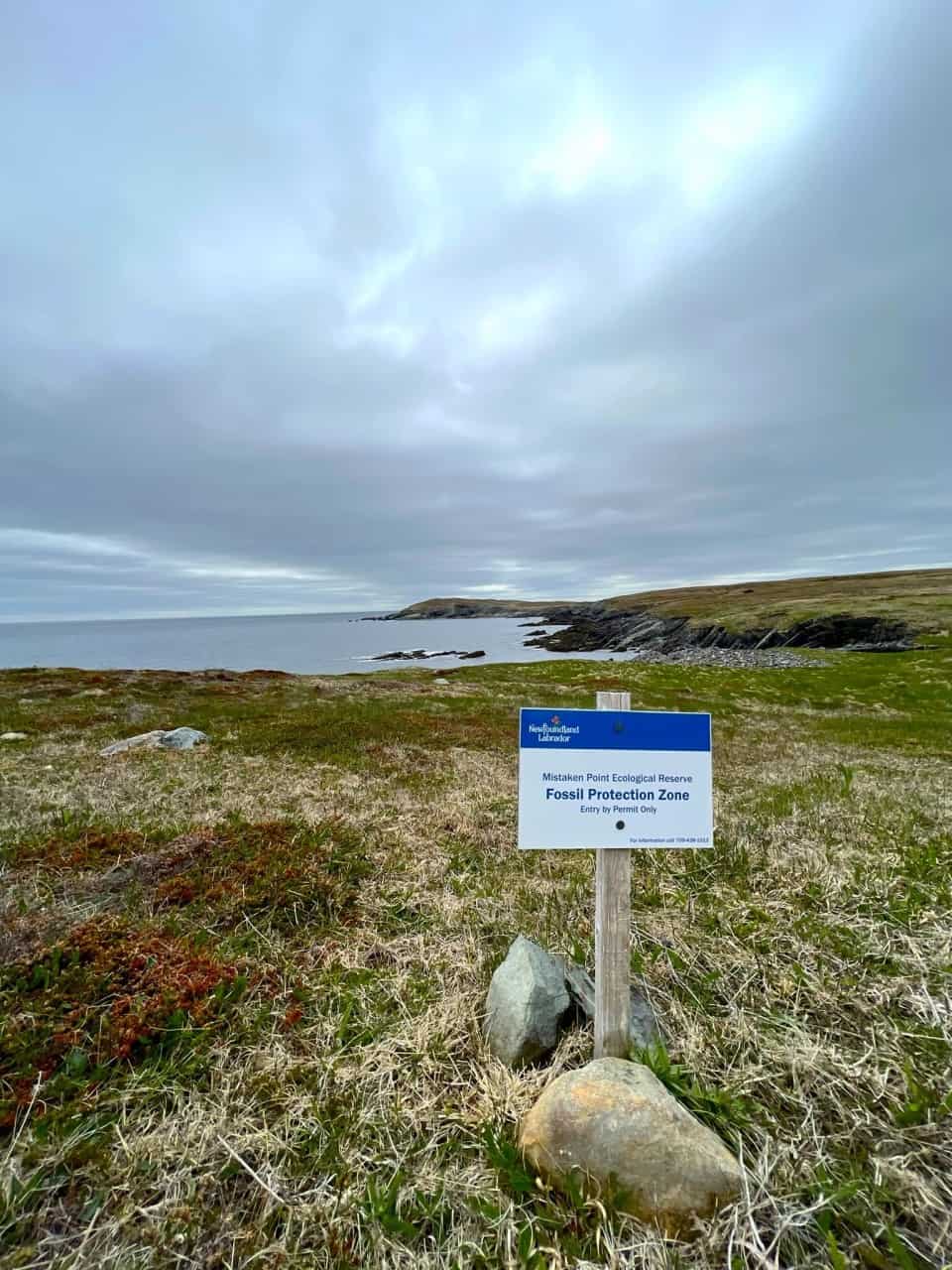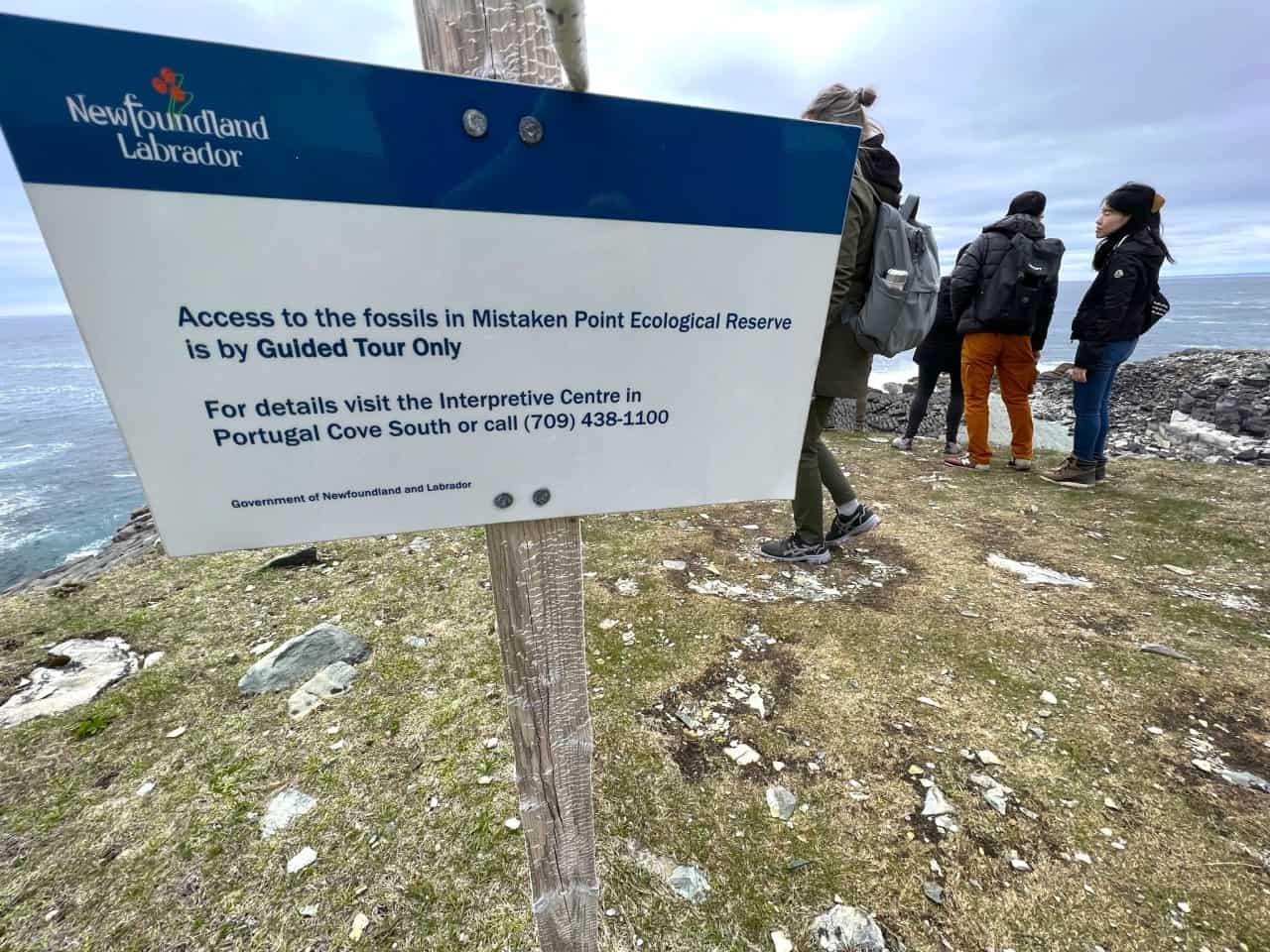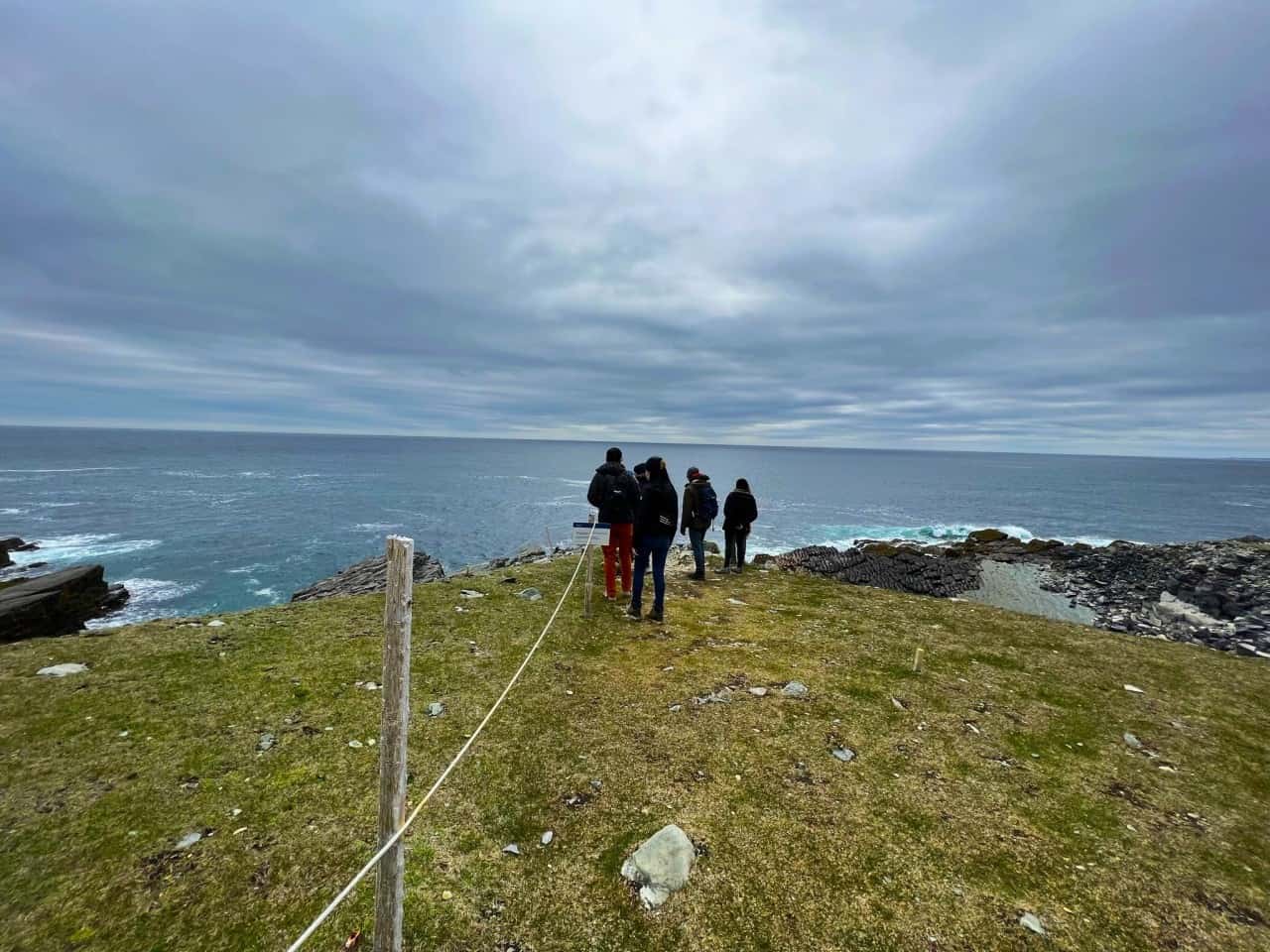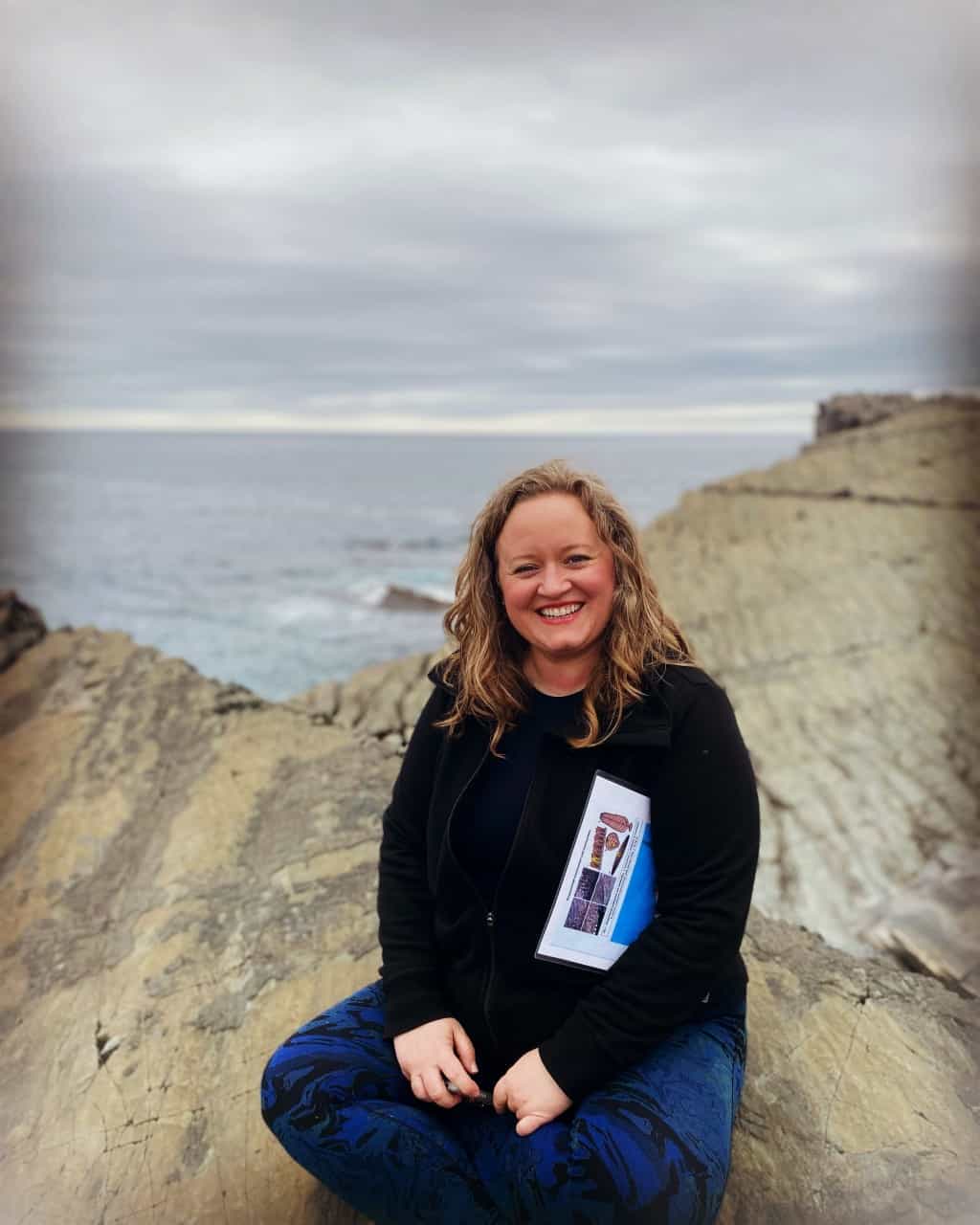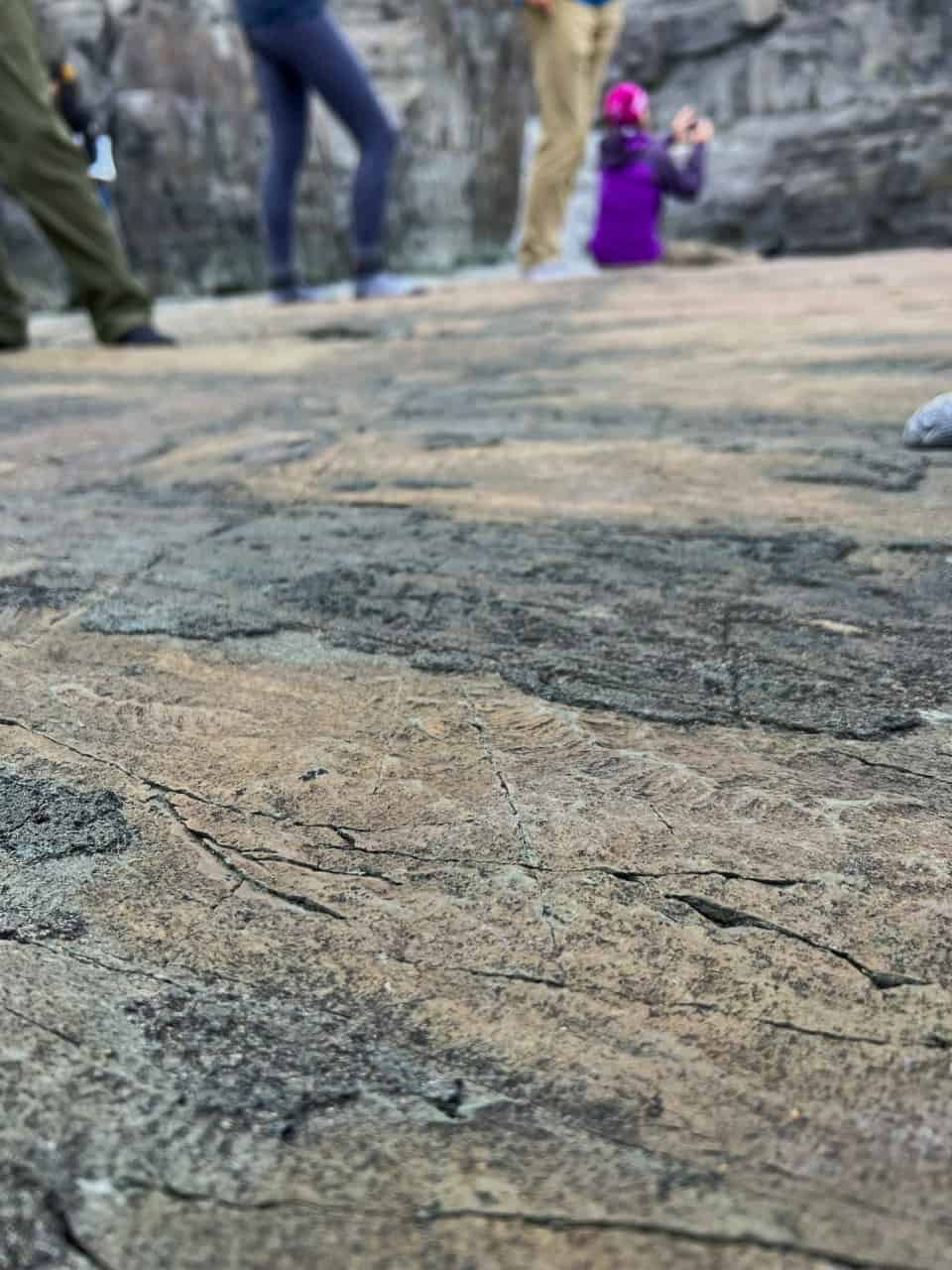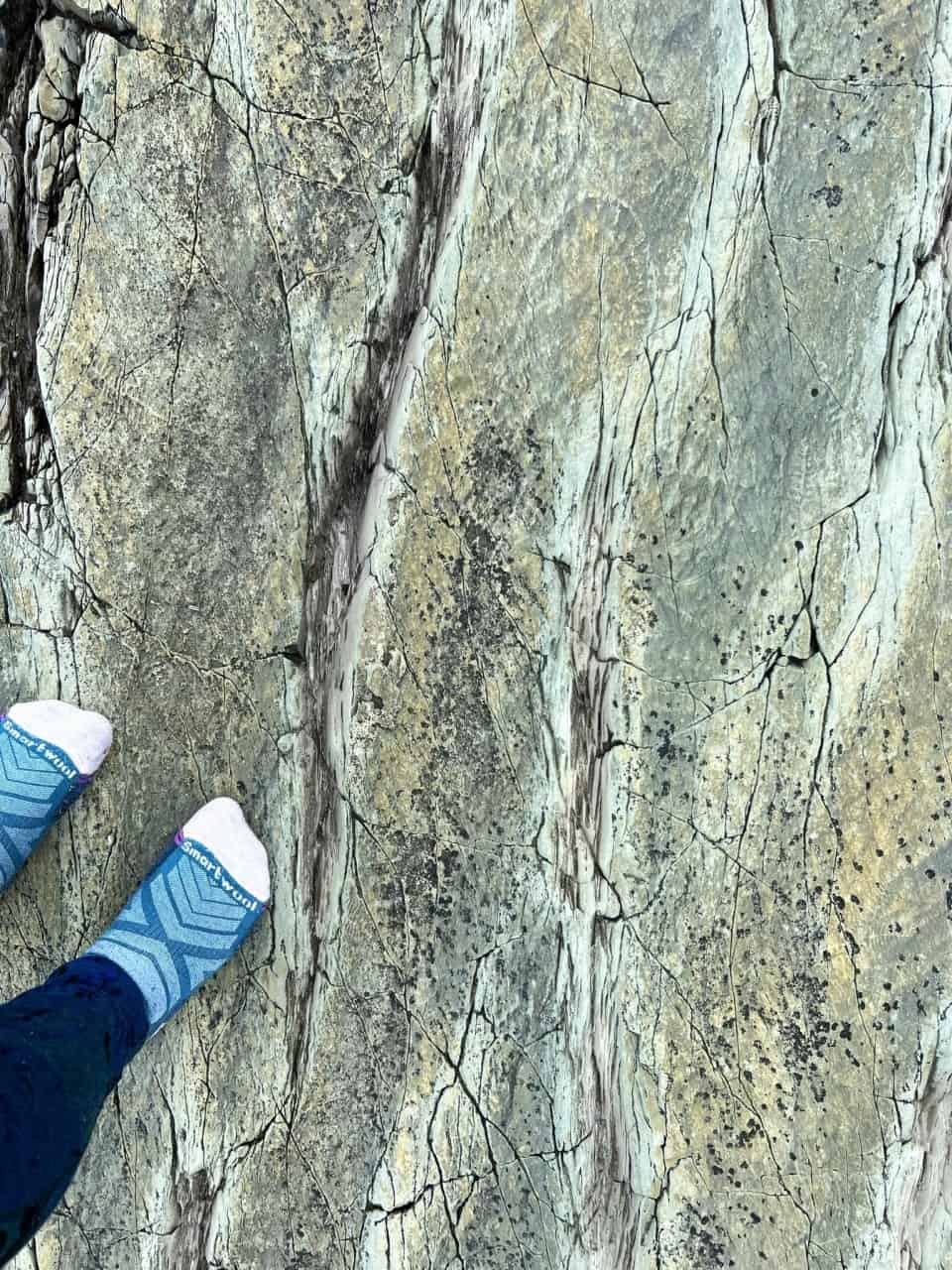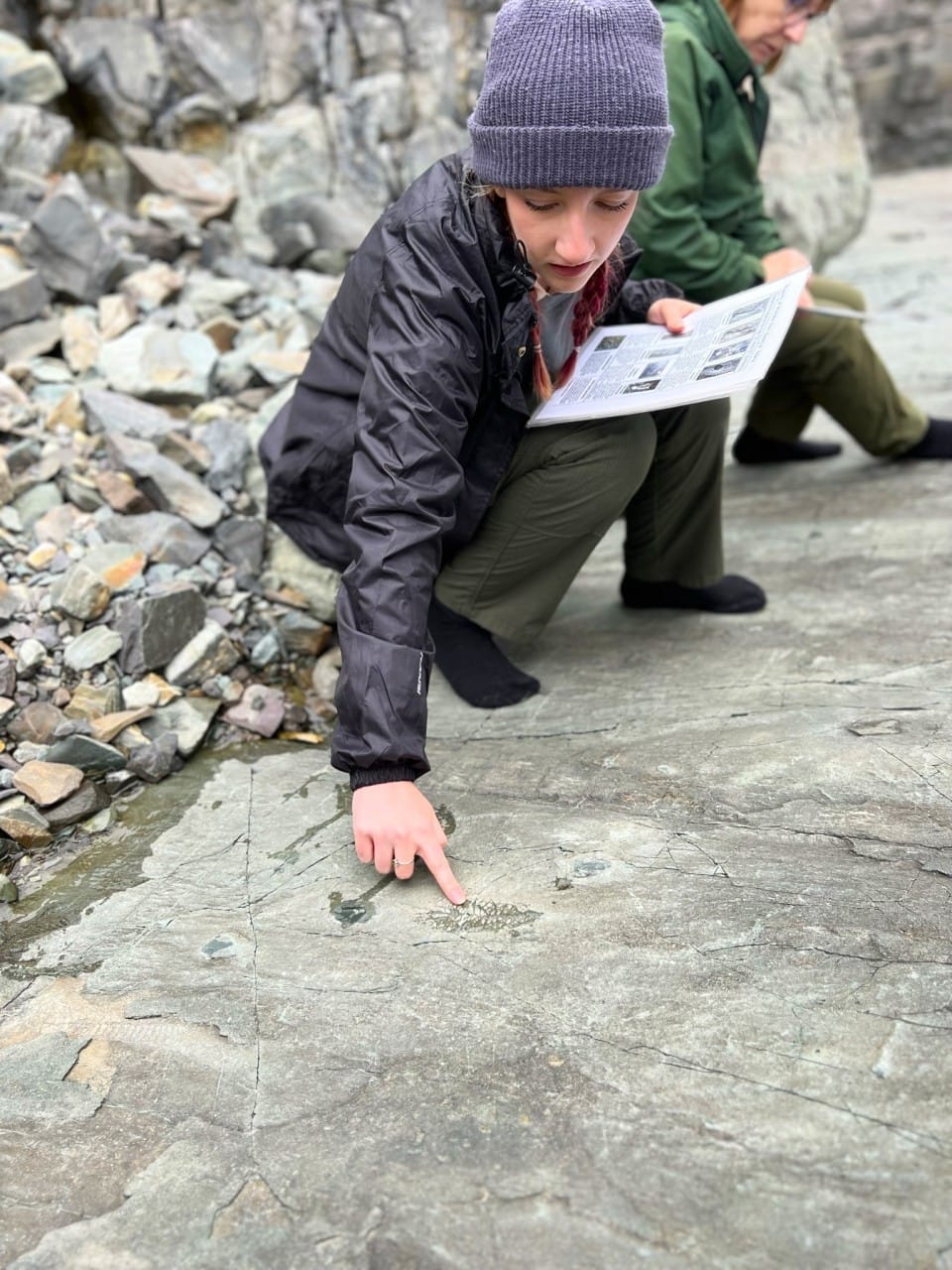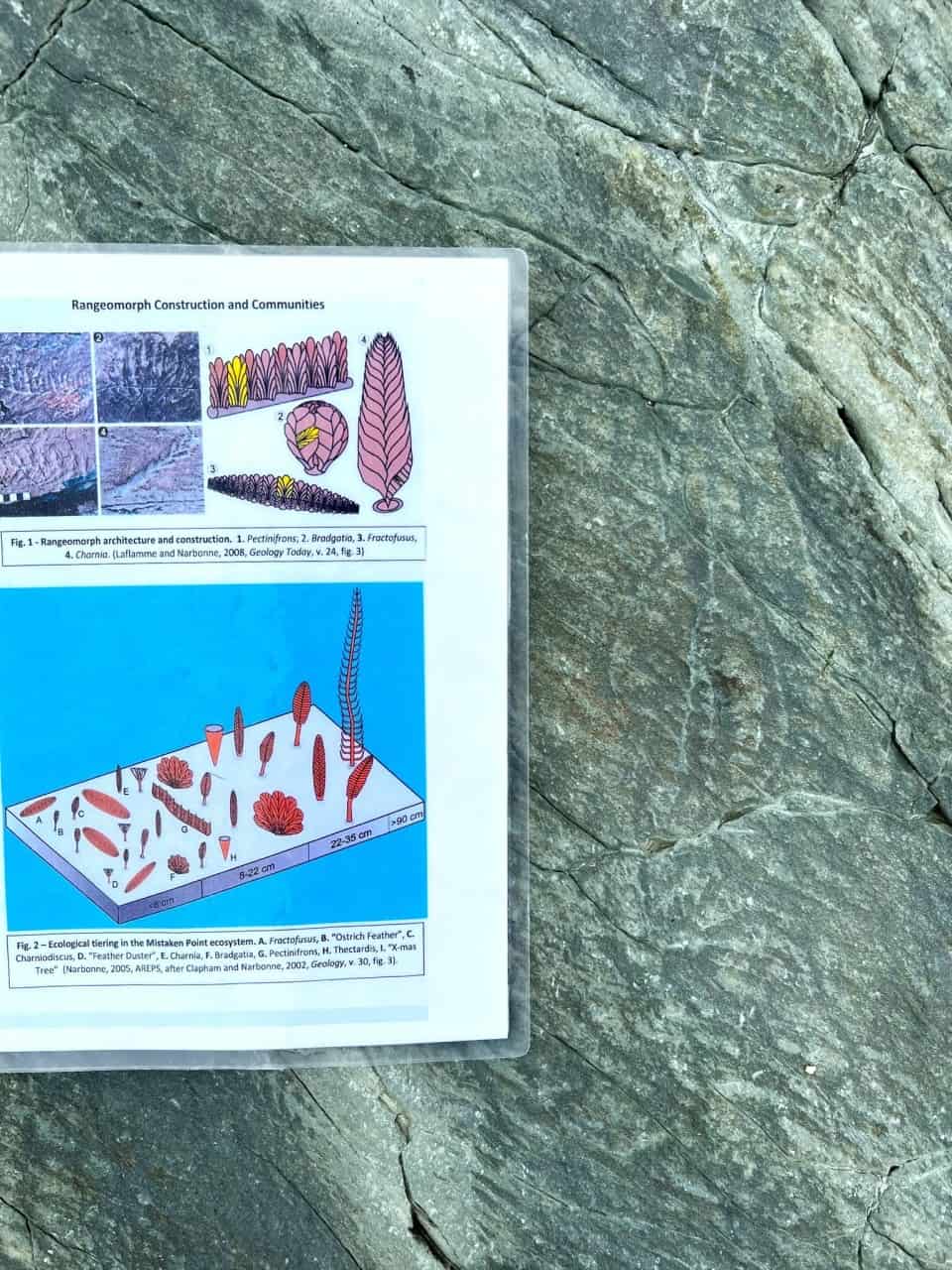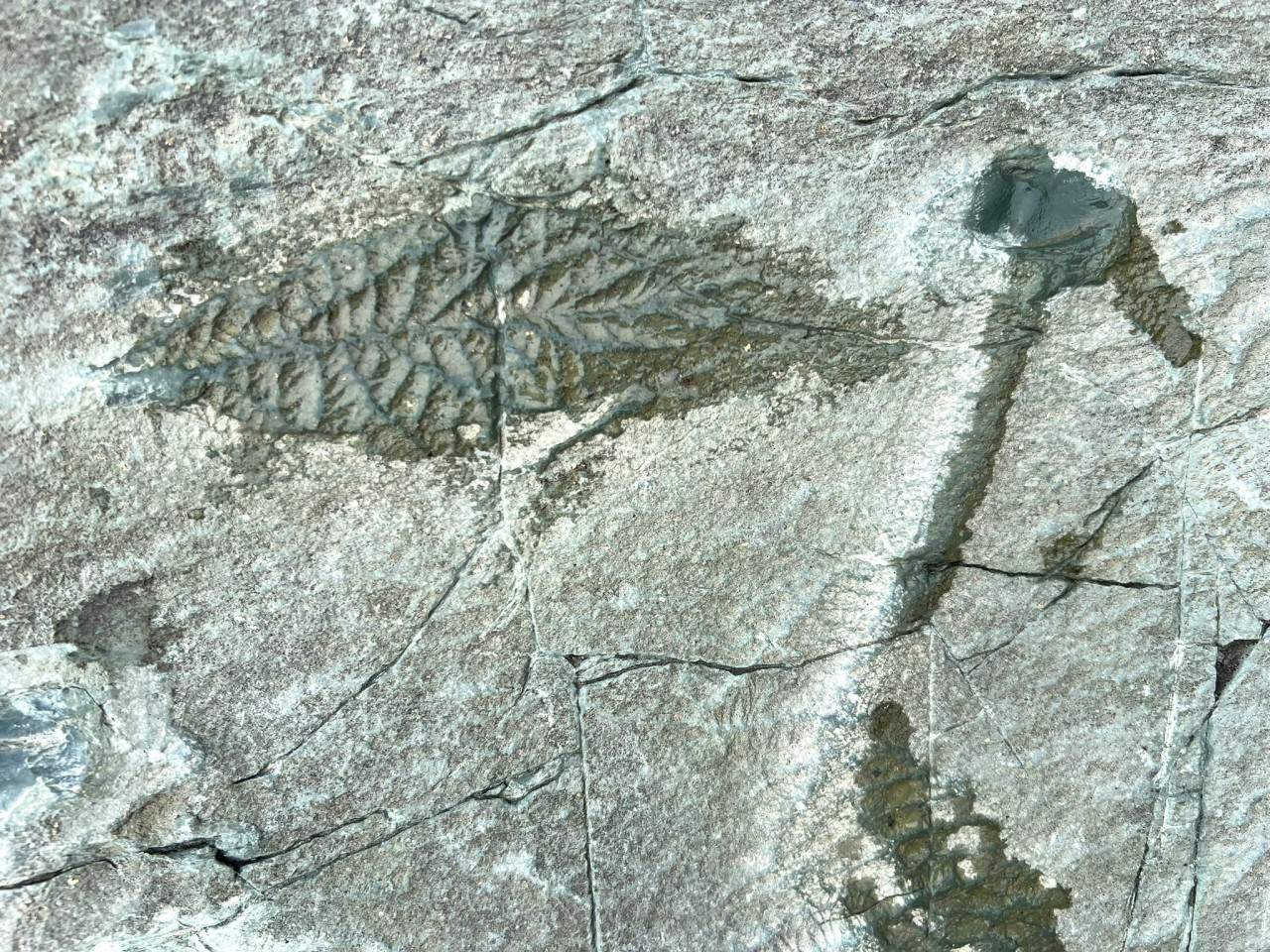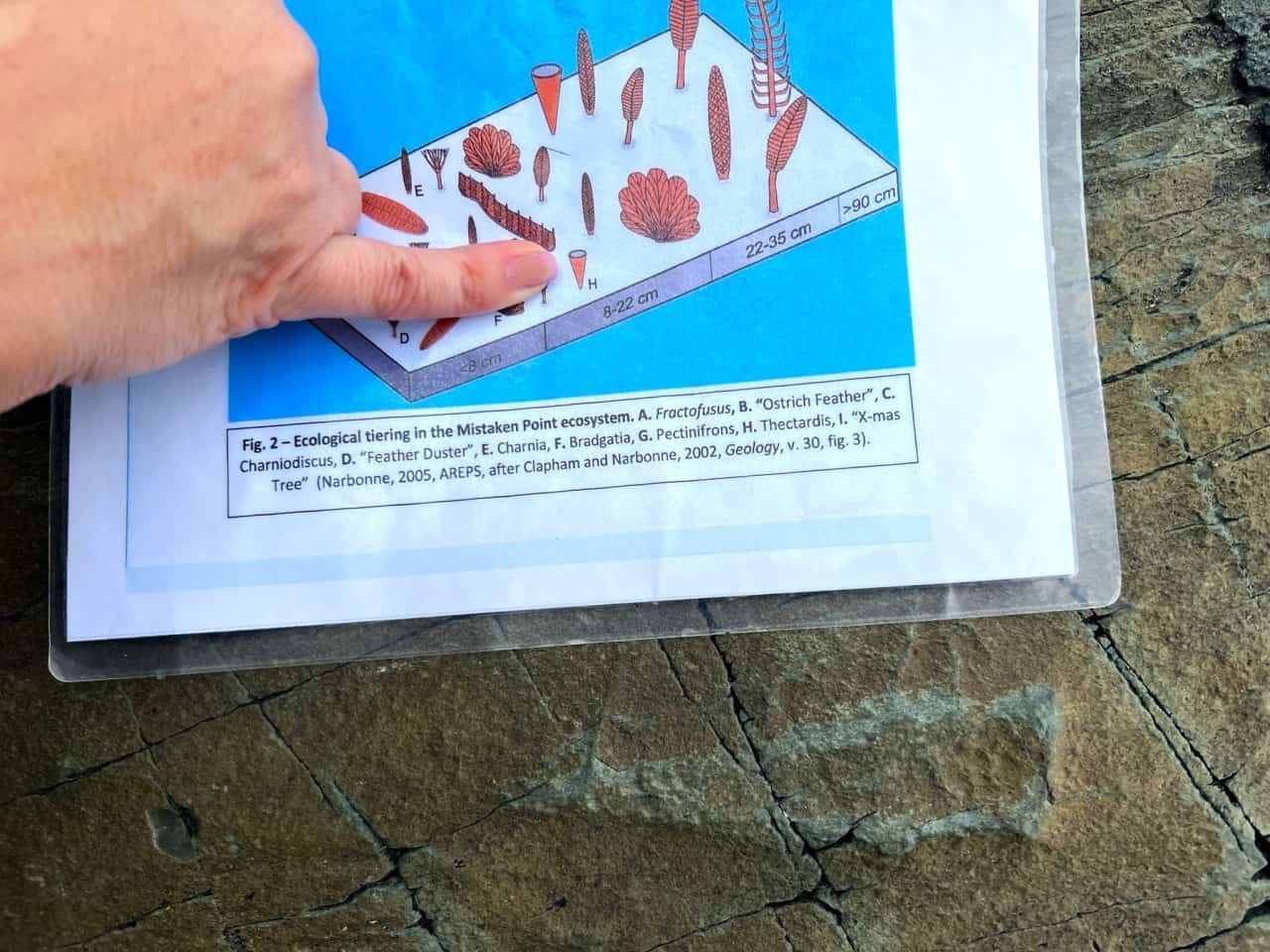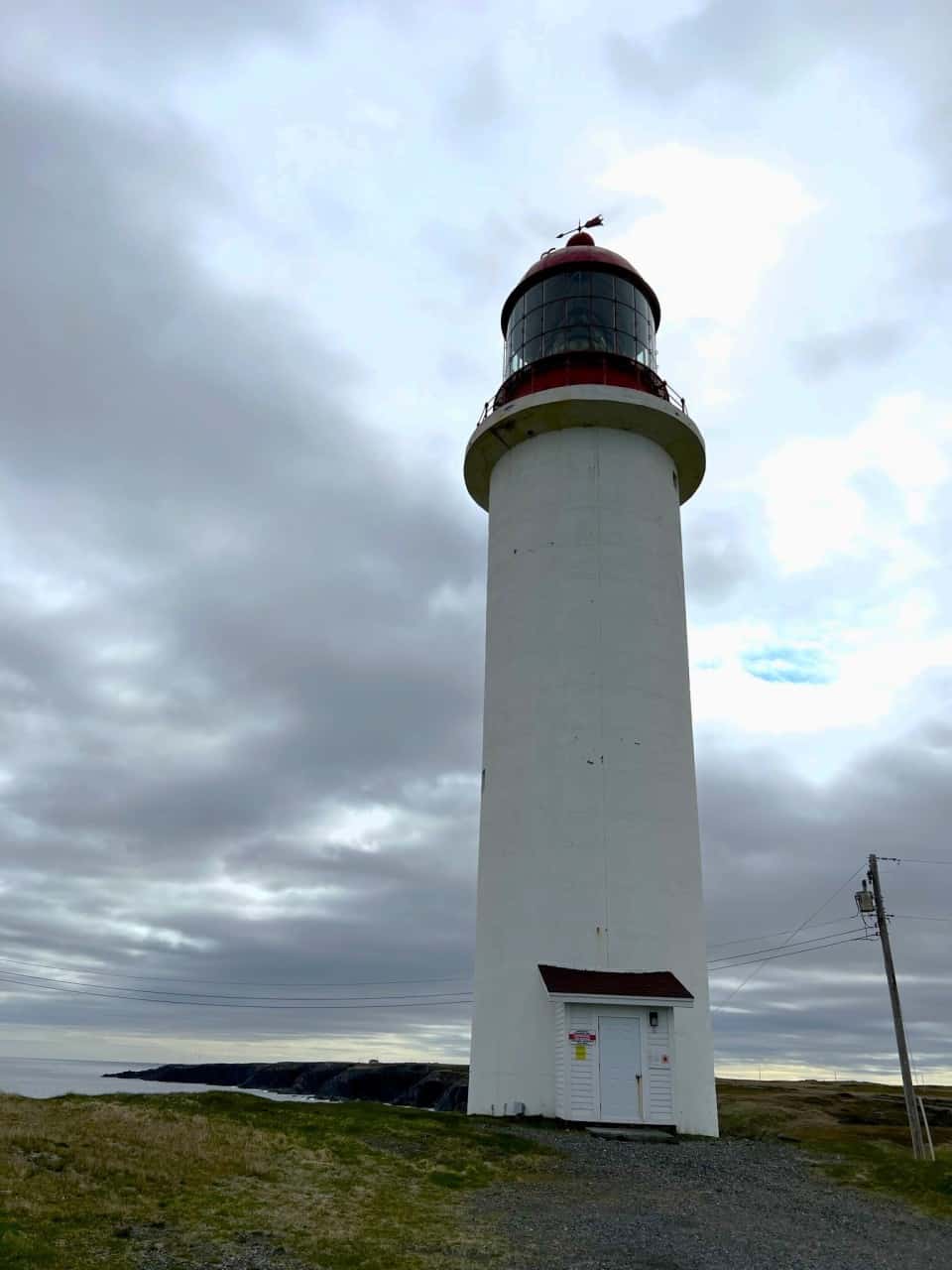By
Amy Rezek
Mistaken Point Ecological Reserve and UNESCO World Heritage Site, Portugal Cove South Newfoundland Canada
This past June I took a road trip to the southeastern tip of the Avalon Peninsula of Newfoundland to visit the Mistaken Point Ecological Reserve. To visit the Reverse you book a guided tour at the Edge of Avalon Interpretation Centre in Portugal...
This past June I took a road trip to the southeastern tip of the Avalon Peninsula of Newfoundland to visit the Mistaken Point Ecological Reserve. To visit the Reverse you book a guided tour at the Edge of Avalon Interpretation Centre in Portugal Cove South.
The fossils you discover at Mistaken Point are the world's oldest and largest collection of biologically complex marine life fossils. These fossils from the Ediacaran period are perfectly preserved on a prehistoric ocean floor. This area has over 10,000 fossils. When you arrive you actually get to walk in your sock feet on a 565-million year old ocean floor - it was incredible!
The fossils were known to the local communities for many generations, but it wasn't until 1967 when Shiva Balak Misra discovered them and knew their significance, that protection for the fossils begin to start. He was in the area mapping Precambrian rocks along the coastline. In the years to follow there were people lobbied to preserve the fossils for their historical significance as this was the first record of Ediacaran fauna in the Western Hemisphere. In 1987 it was designated as a fossil ecological reserve. In July of 2016 it was further designated as a UNESCO World Heritage Site.
The 2023 fee is $23 per person, but there is also a child and family rate available. When you go to the Interpretation Centre you can learn about the history of the fossils and the history of the Cape Race Lighthouse. This lighthouse is just down the road from the Ecological Reserve and is still operational with a light keeper tending to it. The Marconi station at Cape Race was the first to hear and answer the distress signals from the Titanic.
This area of the Avalon Peninsula is part of a road trip known as the Irish Loop (Route NL-10). It is just over two (2) hours from St. John's. The location of the guided hike requires you to drive about 15 minutes from the Interpretation Centre to a designated parking lot which is equipped with washrooms.
The total hike is about six kilometres and takes about 3-4 hours, depending on how long you want to stay and explore the fossils.
It is important to dress in layers as this area of the province is generally foggy and this close to the tip of the Peninsula the wind can certainly gust, although it was beautiful on the day we got to explore. Overall, I would recommend making time to visit this historically significant area of Newfoundland, and the world.
More
The fossils you discover at Mistaken Point are the world's oldest and largest collection of biologically complex marine life fossils. These fossils from the Ediacaran period are perfectly preserved on a prehistoric ocean floor. This area has over 10,000 fossils. When you arrive you actually get to walk in your sock feet on a 565-million year old ocean floor - it was incredible!
The fossils were known to the local communities for many generations, but it wasn't until 1967 when Shiva Balak Misra discovered them and knew their significance, that protection for the fossils begin to start. He was in the area mapping Precambrian rocks along the coastline. In the years to follow there were people lobbied to preserve the fossils for their historical significance as this was the first record of Ediacaran fauna in the Western Hemisphere. In 1987 it was designated as a fossil ecological reserve. In July of 2016 it was further designated as a UNESCO World Heritage Site.
The 2023 fee is $23 per person, but there is also a child and family rate available. When you go to the Interpretation Centre you can learn about the history of the fossils and the history of the Cape Race Lighthouse. This lighthouse is just down the road from the Ecological Reserve and is still operational with a light keeper tending to it. The Marconi station at Cape Race was the first to hear and answer the distress signals from the Titanic.
This area of the Avalon Peninsula is part of a road trip known as the Irish Loop (Route NL-10). It is just over two (2) hours from St. John's. The location of the guided hike requires you to drive about 15 minutes from the Interpretation Centre to a designated parking lot which is equipped with washrooms.
The total hike is about six kilometres and takes about 3-4 hours, depending on how long you want to stay and explore the fossils.
It is important to dress in layers as this area of the province is generally foggy and this close to the tip of the Peninsula the wind can certainly gust, although it was beautiful on the day we got to explore. Overall, I would recommend making time to visit this historically significant area of Newfoundland, and the world.
The start of the tour provides a plaque with both a summary of the history and a map of where the fossil beds are located.
19 September 2023
·
2 years ago
taken in
Newfoundland Ecological Reserve, NL-10, Portugal Cove South, NL A0A 4B0, Canada
Mistaken Point has trails along the coastline that are free to explore, but access to the fossils is by guided tour only.
The tour guides provide tourists with the history of the local area and information on the local geography and flora that...
The tour guides provide tourists with the history of the local area and information on the local geography and flora that...
Mistaken Point has trails along the coastline that are free to explore, but access to the fossils is by guided tour only.
The tour guides provide tourists with the history of the local area and information on the local geography and flora that exist here.
More
The tour guides provide tourists with the history of the local area and information on the local geography and flora that exist here.
Tuckamore is the local name for the stunted trees that grow along the coastline. Due to the strong gusts of wind and open landscapes the trees grow closely together and out, rather then up. It is the place that fairy's live according to local...
Tuckamore is the local name for the stunted trees that grow along the coastline. Due to the strong gusts of wind and open landscapes the trees grow closely together and out, rather then up. It is the place that fairy's live according to local folklore.
More
The trail has some hills, but the first half of the trail is mostly along an old road that would have been used between the fishing communities along the coast that were only accessible by boat.
19 September 2023
·
2 years ago
taken in
Newfoundland Ecological Reserve, NL-10, Portugal Cove South, NL A0A 4B0, Canada
The hike has a slow and steady pace with lots of time to enjoy the breathtaking views along the southern tip of Newfoundland.
19 September 2023
·
2 years ago
taken in
Newfoundland Ecological Reserve, NL-10, Portugal Cove South, NL A0A 4B0, Canada
Along the way to the fossil beds you pass over a river where the hill can be slippery and muddy. Ensuring you have proper footwear and hiking poles if needed, is advised for this hike.
19 September 2023
·
2 years ago
taken in
Newfoundland Ecological Reserve, NL-10, Portugal Cove South, NL A0A 4B0, Canada
The cliffs along the trail are high and several sections have a rope to caution against going closer. These areas would have been grazed by local animals when there were seasonal fishing in this area.
19 September 2023
·
2 years ago
taken in
Newfoundland Ecological Reserve, NL-10, Portugal Cove South, NL A0A 4B0, Canada
There are markers throughout the area to show the protected zone that requires a permit (and guide) to explore.
19 September 2023
·
2 years ago
taken in
Newfoundland Ecological Reserve, NL-10, Portugal Cove South, NL A0A 4B0, Canada
As you reach the fossil bed's at Mistaken Point there are ropes directing visitors to the designated areas that are approved to walk on.
19 September 2023
·
2 years ago
taken in
Newfoundland Ecological Reserve, NL-10, Portugal Cove South, NL A0A 4B0, Canada
There are a few layers of rocks to climb down single file after the guide gives you a safety talk about the rules while being on the fossil beds.
19 September 2023
·
2 years ago
taken in
Newfoundland Ecological Reserve, NL-10, Portugal Cove South, NL A0A 4B0, Canada
When you arrive at the fossil bed at Mistaken Point it is a little disarming, especially if you are nervous about heights. Normally people caution to stay off the rocks close to the shore so it was unnerving to intentionally explore them, but...
When you arrive at the fossil bed at Mistaken Point it is a little disarming, especially if you are nervous about heights. Normally people caution to stay off the rocks close to the shore so it was unnerving to intentionally explore them, but absolutely worthwhile.
More
One of the incredible parts of this experience was seeing the excitement, curiosity and nervousness of the group as everyone got into their sock feet to walk on history. To walk on fossils that were buried from the ocean floor 635-541 million...
One of the incredible parts of this experience was seeing the excitement, curiosity and nervousness of the group as everyone got into their sock feet to walk on history. To walk on fossils that were buried from the ocean floor 635-541 million years ago was incredible!
More
When you first arrive at the fossil bed it is not clear what you are looking for, or at. It's not every day you look for the oldest and largest examples of complex multi-cellular organisms anywhere on Earth!
The fossil beds are pavement surfaces...
The fossil beds are pavement surfaces...
When you first arrive at the fossil bed it is not clear what you are looking for, or at. It's not every day you look for the oldest and largest examples of complex multi-cellular organisms anywhere on Earth!
The fossil beds are pavement surfaces that are rippled and cracked with layers of ash and siltstone.
More
The fossil beds are pavement surfaces that are rippled and cracked with layers of ash and siltstone.
The knowledgeable guides at Mistaken Point provide each person with a laminated copy of a diagram with the various fossils.
19 September 2023
·
2 years ago
taken in
Newfoundland Ecological Reserve, NL-10, Portugal Cove South, NL A0A 4B0, Canada
As they start to identify the various types of fossils found at Mistaken Point the participants can explore the fossil bed to locate them. The tour guides wander through the participants and help with locating some of the larger fossils.
19 September 2023
·
2 years ago
taken in
Newfoundland Ecological Reserve, NL-10, Portugal Cove South, NL A0A 4B0, Canada
Using the laminated diagram of fossils the hikers get to determine the range of soft-bodied organisms that used to dwell in this community under the sea.
19 September 2023
·
2 years ago
taken in
Newfoundland Ecological Reserve, NL-10, Portugal Cove South, NL A0A 4B0, Canada
The fossil beds at Mistaken Point show the diversity in the organisms that existed. Some were tall on stalks and others were more sea-floor dwelling. This complexity is part of it's historical significance.
19 September 2023
·
2 years ago
taken in
Newfoundland Ecological Reserve, NL-10, Portugal Cove South, NL A0A 4B0, Canada
After looking around I was determined to capture a photo that matched a fossil with it's proper scientific name. I don't remember how to pronounce it, but this is a Thectardis fossil.
19 September 2023
·
2 years ago
taken in
Newfoundland Ecological Reserve, NL-10, Portugal Cove South, NL A0A 4B0, Canada
The fossil beds in Mistaken Point were preserved by being quickly covered when they were washed over by volcanic ash.
19 September 2023
·
2 years ago
taken in
Newfoundland Ecological Reserve, NL-10, Portugal Cove South, NL A0A 4B0, Canada
After hiking back to our vehicles we decided to take the ten minute drive along the shoreline to Cape Race. It is at the very tip of the peninsula and the first lighthouse for boats heading up to St. John's harbour.
It was originally built in...
It was originally built in...
After hiking back to our vehicles we decided to take the ten minute drive along the shoreline to Cape Race. It is at the very tip of the peninsula and the first lighthouse for boats heading up to St. John's harbour.
It was originally built in 1856 and still manned by a light keeper.
More
It was originally built in 1856 and still manned by a light keeper.
No photos available
Drop a file here to upload.






